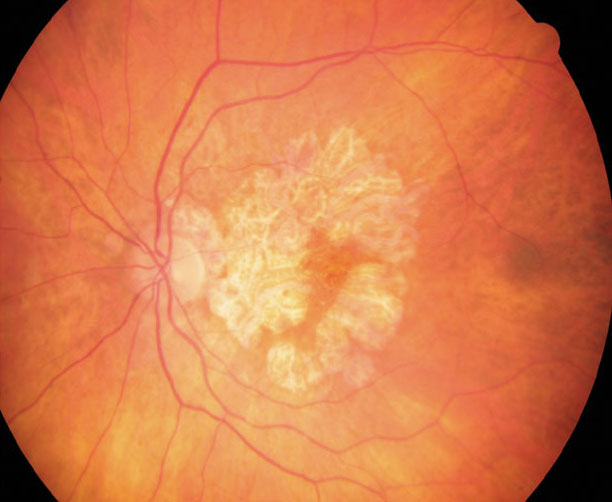 |
| Reading speed could provide information about retinal function, as associations were found between the two in this study. Photo: Wendy Harrison, OD, PhD, and Joe Wheat, OD, PhD. Click image to enlarge. |
Geographic atrophy (GA) secondary to age-related macular degeneration (AMD) is a debilitating disease that causes severe impairment in daily visual tasks. It has been shown, for example, that reading speed in patients with GA declines over time. In a recent study, researchers aimed to determine the association of reading performance in these patients secondary to AMD.
They demonstrated that reading performance was strongly correlated with conventional structural imaging biomarkers, microperimetry-based fixation assessment and functional tests for both reading speed and acuity. Best-corrected visual acuity (BCVA), GA area in the central ETDRS subfield and the presence of foveal sparing were found to be associated with both.
In comparison, low-luminance visual acuity and GA area in the inner-right and inner-upper ETDRS subfields were associated with reading speed but not acuity.
“These results suggest that reading acuity parallels BCVA at the preferred retinal locus (PRL), whereas reading speed provides additional information regarding retinal function in proximity to the PRL,” the authors noted in their paper.
In terms of binocular reading performance, linear regression analysis highlighted that binocular reading acuity and speed are a function of the better-seeing eye. “This underscores the binocular inhibition, as previously observed in the setting of macular telangiectasia type is not common in the setting of GA,” the researchers wrote. “Reading parameters, scotoma size and depth can differ in different macular diseases.”
Their study emphasized the association of reading acuity and speed with established visual function and structural measurements of disease severity.
“Given that decline in vision-related quality of life is driven by near activities in patients with GA, this data strongly supports the use of reading performance as a functional outcome measure in interventional clinical trials,” the authors concluded. “Particularly in eyes with foveal sparing, assessment of reading speed may provide additional relevant functional information beyond mere BCVA. Extrapolation of these results suggests that clinical and low vision care should be focused primarily toward the better-seeing eye based on distance visual acuity.”
Kunzel SH, Lindner M, Sassen J, et al. Association of reading performance in geographic atrophy secondary to age-related macular degeneration with visual function and structural biomarkers. JAMA Ophthalmol. September 30, 2021. [Epub ahead of print]. |

